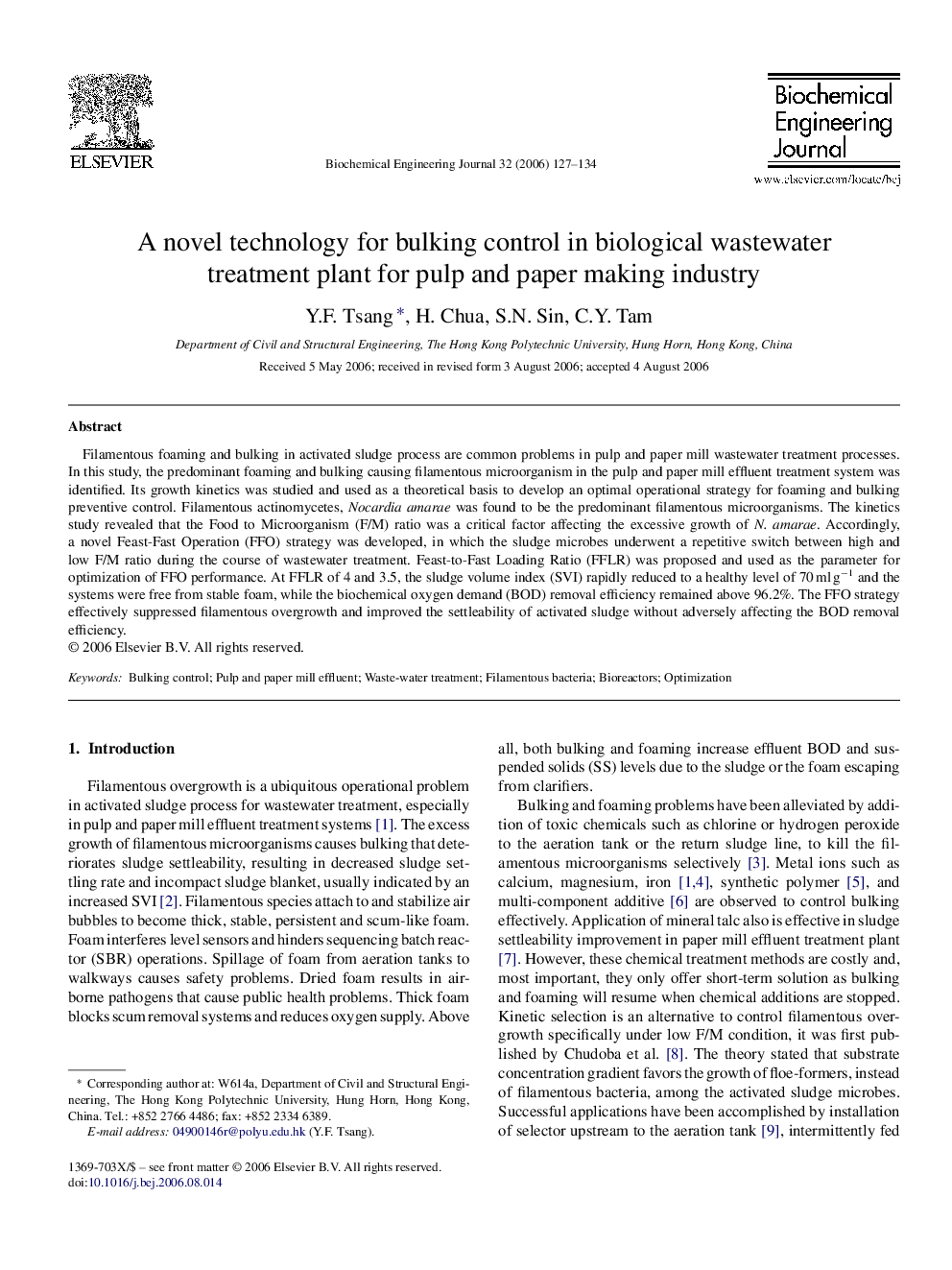| Article ID | Journal | Published Year | Pages | File Type |
|---|---|---|---|---|
| 4884 | Biochemical Engineering Journal | 2006 | 8 Pages |
Filamentous foaming and bulking in activated sludge process are common problems in pulp and paper mill wastewater treatment processes. In this study, the predominant foaming and bulking causing filamentous microorganism in the pulp and paper mill effluent treatment system was identified. Its growth kinetics was studied and used as a theoretical basis to develop an optimal operational strategy for foaming and bulking preventive control. Filamentous actinomycetes, Nocardia amarae was found to be the predominant filamentous microorganisms. The kinetics study revealed that the Food to Microorganism (F/M) ratio was a critical factor affecting the excessive growth of N. amarae. Accordingly, a novel Feast-Fast Operation (FFO) strategy was developed, in which the sludge microbes underwent a repetitive switch between high and low F/M ratio during the course of wastewater treatment. Feast-to-Fast Loading Ratio (FFLR) was proposed and used as the parameter for optimization of FFO performance. At FFLR of 4 and 3.5, the sludge volume index (SVI) rapidly reduced to a healthy level of 70 ml g−1 and the systems were free from stable foam, while the biochemical oxygen demand (BOD) removal efficiency remained above 96.2%. The FFO strategy effectively suppressed filamentous overgrowth and improved the settleability of activated sludge without adversely affecting the BOD removal efficiency.
